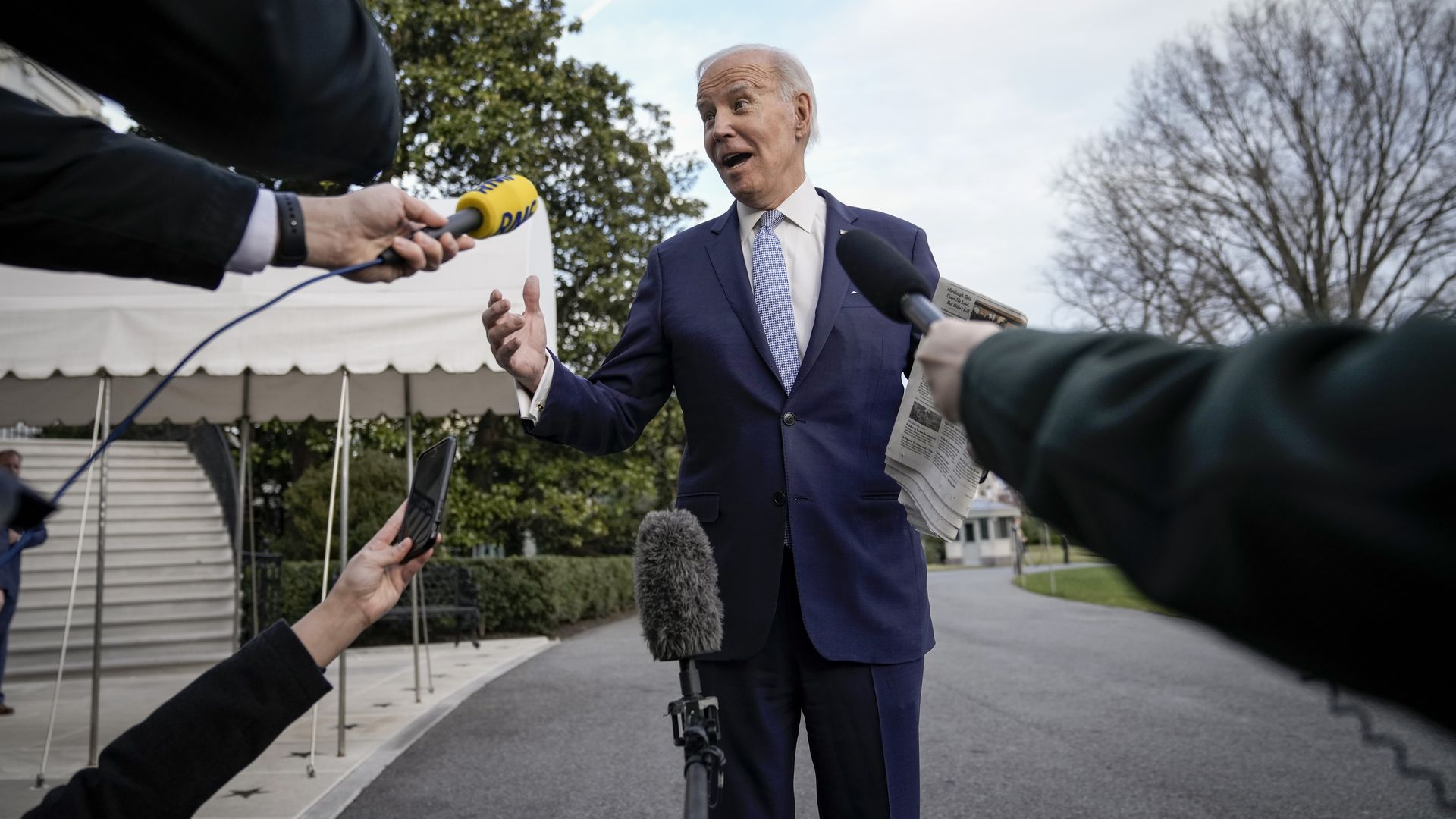President Biden at the White House last month. Photo: Drew Angerer/Getty Images
The Biden administration envisions inflation receding rapidly over the coming two years, amid slower growth and higher unemployment. At least, that's the economic vision contained in forecasts underlying the president's budget proposal.
- It implies a bumpy couple of years for the economy heading into a competitive reelection campaign.
Driving the news: The administration released its budget blueprint Thursday, proposing nearly $3 trillion in deficit reduction, funded in significant part by tax increases on the wealthy and corporations.
- The budget is a political document with no chance of being implemented as is. But it shows the White House's priorities, as fiscal negotiations with House Republicans play out over the next two years.
- The plan would bring annual deficits to about 5% of GDP, versus the 6% forecast under the Congressional Budget Office's outlook.
By the numbers: In a table of economic assumptions, the Biden team assumes GDP will grow only 0.4% this year, with the jobless rate rising to 4.3% and 4.6% in 2024. (It was 3.4% in January.)
- Growth returns to roughly its trend rate of 2.1% in 2024.
- As forecast, the slowdown is enough to bring inflation down to 4.3% in 2023 and 2.4% in 2024, implying price pressures will pretty much normalize when voters go to the polls in November 2024.
- Historically, a jobless jump as large as the one the White House assumes has only occurred during recessions.
Yes, but: That amounts to a sunnier forecast than the CBO's version released last month. It envisions unemployment jumping even higher, to 4.7% this year and 4.9% next, with inflation coming down more slowly.
- And the CBO estimates the consumer price index will clock in at 3%in 2024.
Between the lines: The big near-term question is how much pain it will take to bring inflation back down.
- The administration's view, as reflected in the new numbers, is that it will take a year of anemic growth in 2023 and a jobless rate well above its current levels, yet still low by historical standards.
Further out, the administration also sees lower trend interest rates than the CBO does, which in turn improves the U.S. fiscal outlook. The administration assumes that 10-year Treasury yields will stabilize at 3.4% later in the decade, compared with 3.8% in the CBO forecasts.
- That difference could amount to billions in interest costs over time, and raise questions about whether the 2010s' low rate, low-inflation norms will return later this decade.
Of note: The economic assumptions were finalized in November of last year, so events since then may have changed the outlook, the administration noted.
The bottom line: The Biden administration is braced for a rough 2023 but expects the world to look much better, with lower prices and solid growth, in 2024.
Source: Read Full Article






